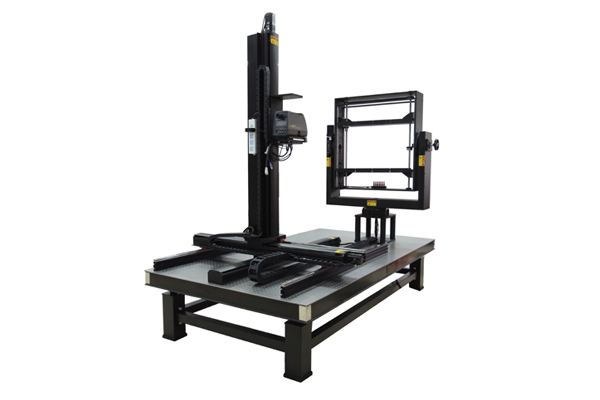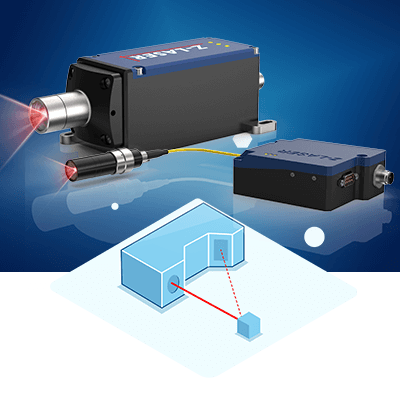The Duty of Optical Dimension Equipments ahead of time Metrology Strategies
Optical dimension systems have transformed width, bringing a level of precision that was once unthinkable. As you check out additionally, you'll discover just how these systems are shaping the future of measurement and top quality control.
The Evolution of Assessment: A Historic Viewpoint
As you check out the history of metrology, you'll discover that its development shows mankind's quest for precision and standardization. From old people using body components as devices of measurement to the advancement of standardized weights and actions, each step shows our need for accuracy. The Egyptians developed the pyramids utilizing precise dimensions, while the Romans progressed design with their innovative measuring tools.
Throughout the Renaissance, scientific breakthroughs shifted the focus toward more empirical approaches, leading the way for modern-day width. The intro of the metric system in the late 18th century noted a substantial milestone, establishing universal requirements. Throughout the 20th century, technical improvements even more transformed metrology, enabling extremely precise measurements in various areas.
Today, width remains to develop, integrating digital innovation and automation. This background highlights not simply the importance of measurement yet additionally our relentless pursuit of enhancing precision and uniformity in our significantly intricate world.
Principles of Optical Measurement Systems
Comprehending the principles behind optical measurement systems is vital for precise cause metrology. You'll intend to consider basic optical concepts, measurement accuracy factors, and reliable system calibration strategies. Each of these aspects plays an essential role in ensuring your dimensions are exact and trusted.
Essential Optical Principles
While exploring optical measurement systems, you'll run into fundamental optical principles that create the backbone of precise information acquisition. Light behaves in foreseeable ways, and comprehending these actions-- like refraction, diffraction, and representation-- is necessary for reliable measurements. By grasping these concepts, you'll be outfitted to leverage optical technologies successfully, leading the means for advancements in assessment and ensuring your measurements are both repeatable and reliable.
Measurement Accuracy Factors
To accomplish high measurement accuracy in optical systems, a number of aspects enter into play, affecting the integrity of your outcomes. The quality of the optical elements matters considerably. Top notch lenses and detectors decrease aberrations and noise, ensuring your measurements are accurate. Second, environmental conditions like temperature and humidity can influence dimensions, so keeping a steady atmosphere is vital. Third, the positioning of the optical system is vital; even minor imbalances can bring about substantial mistakes. The wavelength of light utilized impacts the resolution and precision of your dimensions. By attending to these elements, you can enhance the total efficiency of your optical measurement systems, leading to even more dependable and exact lead to your metrology applications.
System Calibration Techniques
Attaining high measurement accuracy is just component of the equation; appropriate system calibration strategies are equally essential in optical dimension systems. Next off, use recognized dimensions to validate the system's output and make necessary modifications. With these methods, you'll enhance the integrity of your optical measurement system.
Key Technologies Behind Optical Measurement
Optical measurement systems depend on numerous key technologies that enhance precision and efficiency in width. One necessary innovation is interferometry, which makes use of the disturbance of light waves to determine tiny variations and surface abnormalities with extreme accuracy. You'll also locate laser scanning systems, which record detailed 3D data of items swiftly, making them invaluable for dimensional analysis.
Furthermore, CCD and CMOS sensors play a significant duty in transforming light into electrical signals, allowing for high-resolution imaging and exact dimensions. Advanced algorithms for image processing better improve dimension accuracy by examining information in genuine time, removing sound and boosting functions.
Ultimately, optical fiber give versatility and the capability to determine in hard settings while maintaining signal integrity. By leveraging these innovations, you can accomplish premium results in your assessment tasks, making sure that your measurements are both exact and trustworthy.
Applications of Optical Dimension in Sector
As markets increasingly require precision and performance, the applications of optical measurement systems have ended up being crucial throughout numerous industries. In production, these systems assist you keep track of measurements and tolerances in real-time, making certain high quality control without taxing manual checks. In the automotive industry, optical dimensions aid in aligning parts with accuracy, improving safety and security and efficiency.
In electronic devices, you're using optical approaches to check min features on circuit boards, spotting flaws that can bring about failings. The aerospace sector gain from non-destructive screening techniques, allowing you to examine materials and components without endangering their integrity.
Optical measurement also plays a vital function in textiles, making certain fabric measurements satisfy precise specs. optical measurement system. With their capacity to give high-resolution data swiftly, these systems equip you to make informed decisions, improve procedures, and ultimately drive innovation across your sector
Enhancing Accuracy and Performance in Measurements
When you consider improving accuracy in measurements, accuracy in your measurement strategies is important. By streamlining these processes, you can attain quicker outcomes without sacrificing high quality. Let's discover how embracing sophisticated optical dimension systems can elevate both accuracy and effectiveness in your work.
Precision in Measurement Techniques
Accuracy in dimension methods is important for accomplishing dependable lead to width, specifically because tiny discrepancies can bring about considerable errors. By utilizing advanced optical measurement systems, you can boost the precision of your measurements. These systems supply high-resolution information that aid you spot even the smallest variations in dimensions. When you adopt these technologies, you minimize uncertainties and improve repeatability in your processes. Furthermore, specific dimensions permit you to preserve quality assurance, making certain that products fulfill rigorous specs. This not just increases your reliability however additionally improves consumer complete satisfaction. Purchasing precision dimension tools ultimately causes enhanced efficiency, reduced waste, and optimized manufacturing cycles. Embracing these methods will certainly transform your approach to width, yielding exceptional outcomes.
Improving Measurement Procedures
To improve precision and effectiveness in dimensions, simplifying your dimension processes is crucial. Beginning by embracing optical dimension systems that provide real-time data, minimizing the time invested in manual recording. These systems typically incorporate effortlessly with existing software application, permitting you to automate information collection and evaluation.
Next, standardize your measurement methods. By executing consistent procedures, you lessen irregularity and enhance repeatability. Don't forget to routinely calibrate your tools to ensure its accuracy.

The Effect of Optical Measurement on Study and Advancement
As researchers venture to push the borders of advancement, optical measurement systems have actually come to be vital tools in the advancement procedure. These systems supply you with exact, real-time data that improves your capacity to examine complicated products and frameworks. In various areas, from biotechnology to aerospace, you depend on optical measurements to boost and maximize designs product efficiency.

With high-resolution imaging and non-contact techniques, you can decrease example disturbance, enabling for more accurate results. This ability to record minute details increases your R&D cycle, letting you iterate styles promptly and efficiently. Optical measurement cultivates collaboration throughout techniques, as the data produced is typically quickly interpretable and shareable.
Eventually, integrating optical measurement systems into your research study not only enhances performance but click here for more likewise strengthens your understanding of the sensations you research study. By leveraging these advanced strategies, you're far better furnished to innovate and remain ahead in a competitive landscape.
Future Fads in Optical Measurement Equipments
With the fast development of modern technology, you're most likely to see significant changes in optical measurement systems that will certainly redefine their application across different industries. You'll see an approach raised automation and combination of expert system, enabling real-time data evaluation and improved precision. Miniaturization is another fad; compact gadgets will certainly make it possible for measurements in tighter areas, making them excellent for fields like aerospace and biomedical applications.
Moreover, the development of advanced materials, such as photonic crystals, will certainly improve level of sensitivity and resolution. Anticipate to see systems that can operate in tough environments, supplying reliable measurements in severe problems. Cloud-based analytics will likewise play an essential role, using you accessibility to large datasets for much better decision-making. As these innovations merge, you'll find that optical measurement systems not just boost accuracy but additionally improve process, inevitably driving innovation and efficiency in your jobs.
Regularly Asked Inquiries
Just How Do Optical Dimension Equipments Contrast to Typical Dimension Techniques?
Optical dimension systems use greater precision and faster results compared to conventional techniques. You'll find they capture even more information factors precisely, minimizing human mistake and raising integrity, making them a recommended selection in numerous applications.
What Industries Advantage A Lot Of From Optical Measurement Systems?
You'll find sectors such as aerospace, resource vehicle, and electronics benefit most from optical dimension systems. These fields depend on exact measurements to guarantee top quality and efficiency, improving efficiency and lowering prices with advanced modern technology.

Are Optical Dimension Solutions Expensive to Implement?
Optical measurement systems can be pricey to carry out, but their precision and performance typically justify the expense. Spending in such technology can bring about significant lasting savings dig this and enhancements in quality across numerous applications.
What Skills Are Needed to Run Optical Measurement Solutions?
To run optical measurement systems, you'll need solid logical skills, interest to information, and proficiency in software application devices. Knowledge with optics and an understanding of measurement principles will certainly additionally boost your effectiveness and performance.
Exactly How Do Ecological Elements Influence Optical Measurements?
Environmental elements like air, moisture, and temperature level quality can distort optical measurements. You'll discover variations in precision because of light disturbance or refraction. optical measurement. Keeping secure problems is important for specific and trusted optical dimension outcomes
Verdict
In recap, optical dimension systems are changing width by giving unparalleled accuracy and performance. By using sophisticated concepts and innovations, these systems enhance accuracy while minimizing disturbances in numerous markets. As you check out future trends, you'll see how the assimilation of AI and automation will certainly remain to raise measurement techniques, driving technology and enhancing high quality control. Embracing these advancements will certainly be vital for staying competitive and attaining excellence in your field.
Accomplishing high measurement precision is only component of the formula; correct system calibration methods are equally vital in optical dimension systems.When you assume about enhancing precision in dimensions, precision in your dimension methods is vital. By using innovative optical measurement systems, you can boost the accuracy of your dimensions.To enhance precision and efficiency in measurements, simplifying your measurement procedures is important. Just How Do Optical Measurement Solutions Contrast to Traditional Dimension Techniques?
 Jaleel White Then & Now!
Jaleel White Then & Now! Tony Danza Then & Now!
Tony Danza Then & Now! Anthony Michael Hall Then & Now!
Anthony Michael Hall Then & Now! Jeremy Miller Then & Now!
Jeremy Miller Then & Now! Andrew McCarthy Then & Now!
Andrew McCarthy Then & Now!